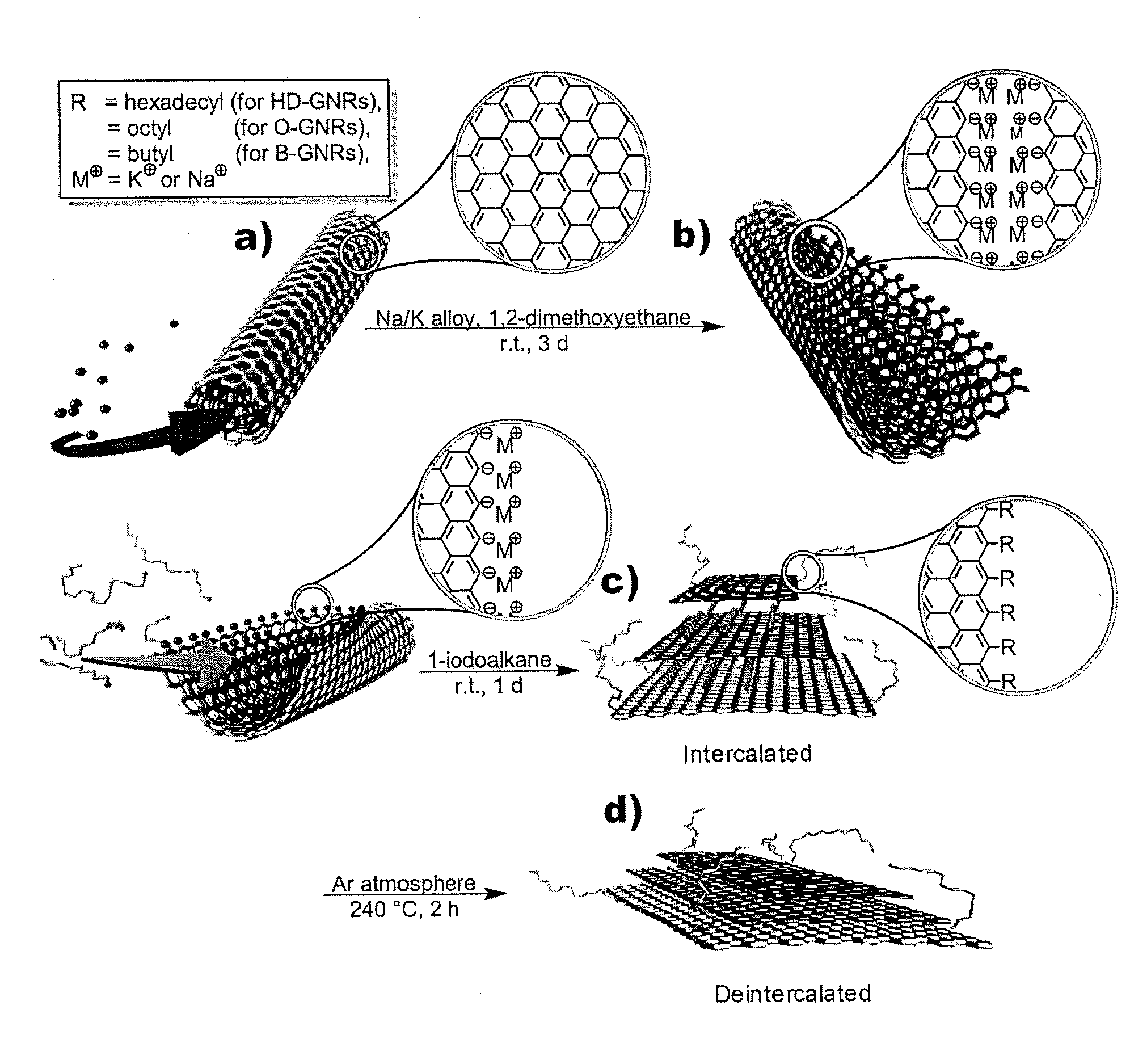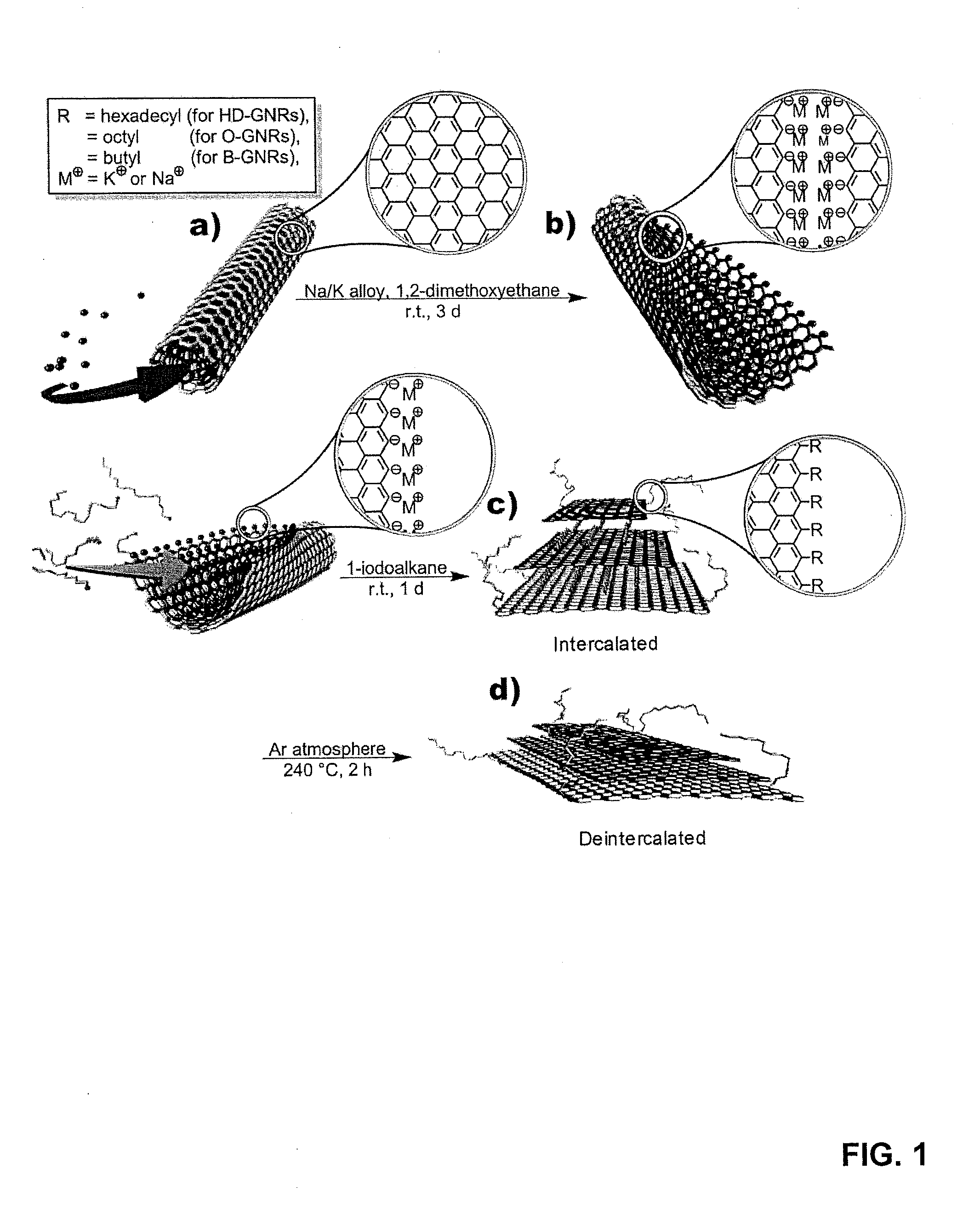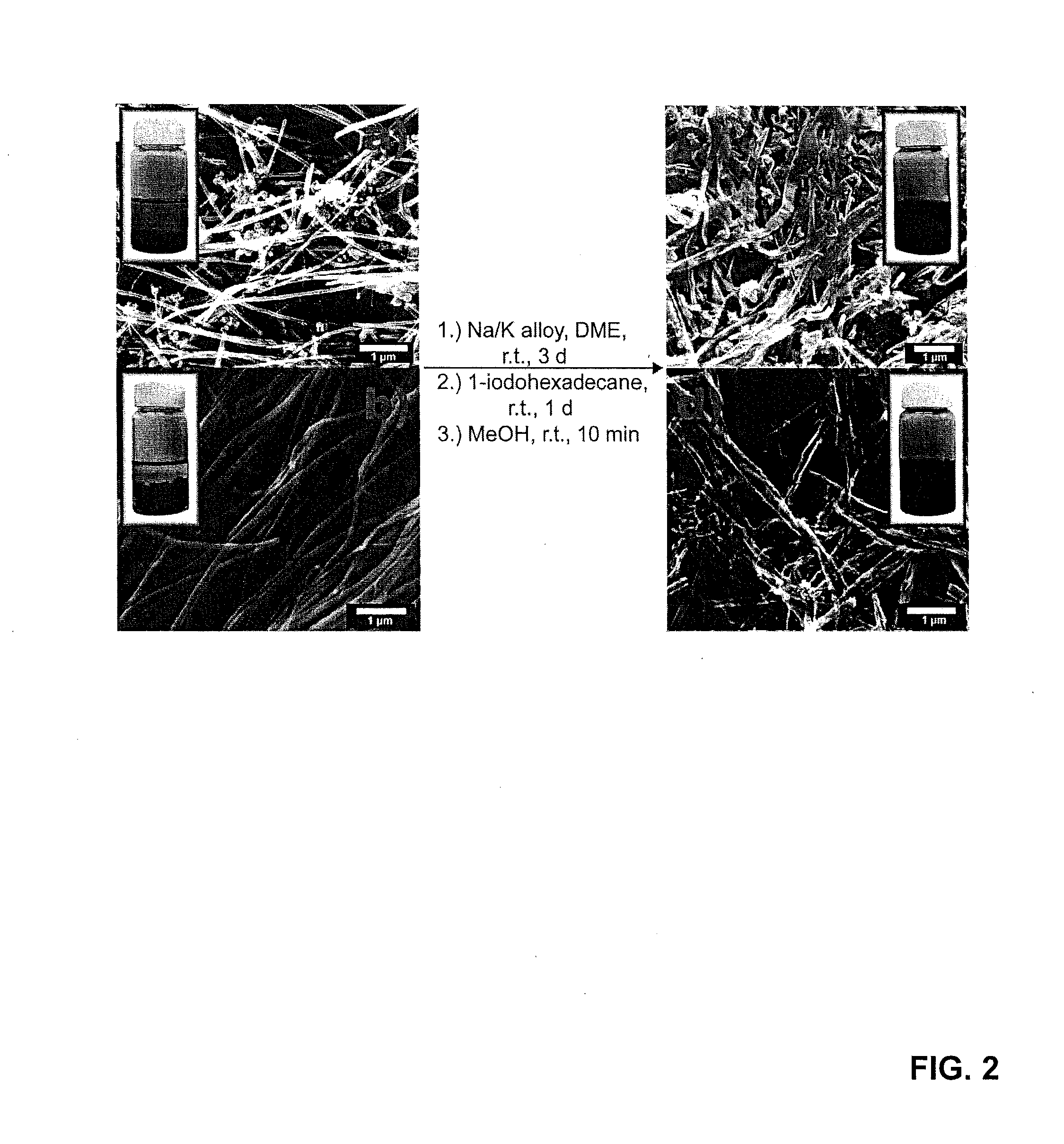Wellbore fluids incorporating magnetic carbon nanoribbons and magnetic functionalized carbon nanoribbons and methods of using the same
a technology of carbon nanoribbons and fluids, which is applied in the direction of wellbore/well accessories, surveying, sealing/packing, etc., can solve the problems of difficult interpretation, low resolution of data obtained from fluids, and numerous limitations of current geological logging techniques
- Summary
- Abstract
- Description
- Claims
- Application Information
AI Technical Summary
Benefits of technology
Problems solved by technology
Method used
Image
Examples
example 1
Splitting and In-Situ Functionalization of MWNTs
[0180]The reaction scheme for the selective edge in-situ functionalization is depicted in FIG. 1. In the first step, commercially available MWNTs from Nanotech Labs, Inc. (NTL) or Mitsui & Co. (Mitsui) were treated with Na / K alloy in 1,2-dimethoxyethane (DME) for several days. Since K (but not Na) can be easily intercalated into graphene galleries and it has been shown that K can be successfully intercalated into graphite flakes using the above conditions, Applicants also expected K to intercalate between the walls of the MWNTs. Without being bound by theory, Applicants' previous work has shown that the intercalation of the K is accompanied by partial longitudinal cracking of the walls as they tend to swell. Under the conditions used, the edge atoms generated should be in the reduced to the carbanionic form and thus very reactive and susceptible to electrophilic attack. This reductive unzipping can be visualized as the reaction mixture...
example 2
Visualization of the Formed GNRs
[0182]Scanning electron micrograph (SEM) images in FIG. 2 clearly indicate that MWNTs split to GNRs in high yields. To quench any active species that were remaining, Applicants treated the reaction mixture with methanol. The crude materials, hexadecylated-GNRs (HD-GNRs), octylated-GNRs (O-GNRs) and butylated-GNRs (B-GNRs), were collected by filtration using 0.2 μm PTFE-membranes. The filter cakes were then washed with organic solvents and water. The filter cakes then underwent Soxhlet extraction to remove the majority of the physisorbed impurities. Before analysis, all of the products were dried in vacuum (˜10−2 Torr) at 60° C. for 24 h. To the best of Applicants' knowledge, a similarly efficient in-situ one-pot method of converting MWNTs to functionalized GNR stacks has not been reported.
example 3
Bulk Properties of the Formed GNRs
[0183]The solubility of pristine graphitic materials may have limitation. For bulk purposes, dispersing of the material is of great importance. For solubility studies, Applicants focused on HD-GNRs. HD-GNRs exhibit an improvement in solubility and dispersability in chloroform after a short sonication using simple ultrasonic cleaner. In FIG. 2, where starting MWNTs were compared to HD-GNRs, the difference is apparent. HD-GNRs show stable dispersions in chloroform for weeks, while MWNTs cannot be dispersed using the same conditions.
[0184]Applicants have also performed solubility tests for HD-GNRs and MWNTs at 0.1 mg / mL concentrations in different solvents. See FIG. 9. HD-GNRs are well dispersible in common organic solvents, such as 2-propanol, acetone, ethyl acetate, diethyl ether, chloroform, hexane, and chlorobenzene. After 1 hour, HD-GNRs settle out in hexanes and diethyl ether, while remaining dispersed in the other solvents. Four days of shelf ag...
PUM
| Property | Measurement | Unit |
|---|---|---|
| diameters | aaaaa | aaaaa |
| solubility | aaaaa | aaaaa |
| 2θ angle | aaaaa | aaaaa |
Abstract
Description
Claims
Application Information
 Login to View More
Login to View More - R&D
- Intellectual Property
- Life Sciences
- Materials
- Tech Scout
- Unparalleled Data Quality
- Higher Quality Content
- 60% Fewer Hallucinations
Browse by: Latest US Patents, China's latest patents, Technical Efficacy Thesaurus, Application Domain, Technology Topic, Popular Technical Reports.
© 2025 PatSnap. All rights reserved.Legal|Privacy policy|Modern Slavery Act Transparency Statement|Sitemap|About US| Contact US: help@patsnap.com



